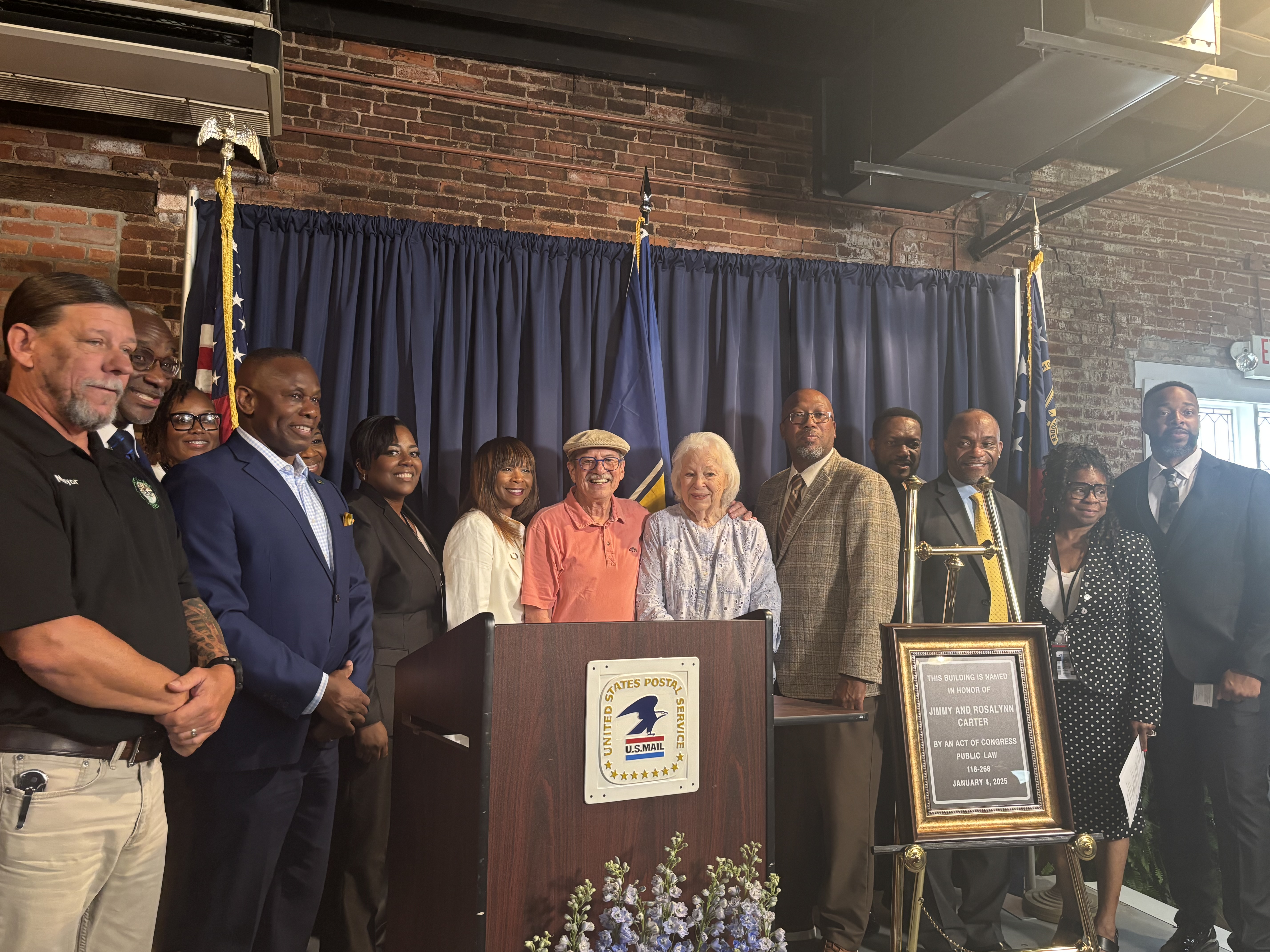What Makes a Place Historic?
Published 12:20 pm Friday, May 14, 2021
|
Getting your Trinity Audio player ready...
|
Evan A. Kutzler
evan.kutzler@gsw.edu
The National Register of Historic Places, administered by the National Park Service, is one of the more misunderstood parts of the US preservation system. Local preservation ordinances and homeowners’ associations are more commonly known, and each can encroach on private property rights. The National Register does not. It does not prevent homeowners from installing storm windows or digging in their backyards. Federal employees in gray and green will not start leading tours through the bedrooms of a house on the National Register.
Trending
Although the National Register provides some protection from federal actions that affect historic properties, it does not ensure long-term preservation. It opens up the opportunity for some tax-credit programs, but it does not provide pots of gold. In practice, the National Register is mostly honorary. It lets communities identify and document places that matter. Most importantly, though, the process of nominating a property to the National Register pushes one to articulate what makes something historically significant, and ensures that record will be there for future generations.
Historic properties on the National Register fall into one of five categories. They can be buildings like the Windsor Hotel. They can be structures, such as the (eligible but not yet nominated) Thomas L. Bell Stadium or the city water tower constructed by the Works Progress Administration. The National Register also includes objects, like the headstones at Oak Grove Cemetery or E. M. Viquesney’s “Spirit of the American Doughboy” monument, as well as archaeological sites whose artifacts may reveal information on the past. Sometimes buildings, structures, objects, and sites are listed individually; other times, they are combined into districts such as the Americus Historic District, the Ashby Street Shotgun Row Historic District, or the Third District A&M School / Georgia Southwestern College Historic District.
Buildings, Structures, and Objects at Lee and Lamar, ca. 1940.
To list a property in the National Register, one submits a nomination that passes through a state review board (or, if applicable, a tribal review board). This nomination can come from anyone. It does not have to come from a trained historian. Nominations that pass this review board go to the Keeper of the National Register of Historic Places who makes a final determination. There are more than 1.4 million historic resources listed individually or as part of districts in the United States.
Criteria of Significance
What makes a place historic in the first place? Age alone is not sufficient, but properties that attained historical significance within the last 50 years are usually ineligible for the National Register. The history does not need to be a “first,” a “last,” the “biggest” or the “best” and neither does it need to make us feel proud, angry, or guilty. It should, however, make us think. There are four criteria for evaluating whether properties have historic significance: Criterion A, “association with historic events or activities;” Criterion B, “association with important persons;” Criterion C, “distinctive design or physical characteristics,” and Criterion D, “potential to provide important information about prehistory or history.” While a property needs to have historical significance in only one area, properties often meet multiple criteria.
Perhaps it is best to address these vague criteria one by one. Criterion A, “association with historic events or activities,” covers both specific events and broad patterns in history. The social and military history of Camp Sumter in 1864 and 1865 makes the prison site eligible for the National Register. Campbell Chapel AME Church also qualifies under Criterion A. Its nomination argues that the building “has played a major role in African-American affairs in this South Georgia county seat community.” There are several historic places in Sumter County—the Webb Family Farm, the Teel-Crawford-Gaston Plantation, and the Morgan Farm—that are eligible for their association to the history of agriculture. These places, like Campbell Chapel, show us that properties do not need to have national significance. Most properties are significant at the local level.
The late Anthony School was also eligible under Criterion A. It was historic because of the specific event in which the county school board sold off public property at a massive discount as part of white resistance to integration. It was historic because of this history—not despite it. It was also historic because of its association to the broad trends in education from 1931 through its Southland years. In this way, my friend Carson Walker was correct in his last letter to the editor. Those memories of his teachers, the school newspaper, and learning about President Kennedy’s assassination are part of what made Anthony School significant at the local level. Preserving those memories in the form of an oral history would help mitigate the loss of that building. It can never replace it.
The second category, Criterion B, “association with important persons,” is the least used national register category today. At first glance, that may sound surprising. After all, as any student who has feared history class might think, isn’t history just memorization and recitation of names and dates? This may have been history at one time, but the discipline moved beyond “great men” histories generations ago. As the cast of characters has grown over the last sixty years, exactly what makes an “important person” has become murky. Jimmy Carter National Historic Park is listed in the National Register based on Criterion B (as well as Criterion A), but there are few people who would deny that Jimmy and Rosalynn Carter are important people.
The third category, Criterion C, is a popular one. Thomas F. King, an expert in preservation law, offers a pneumonic device for remembering this category: the “C” stands for “cute buildings.” This is true in many cases, but Criterion C is broader than high-style architecture. Liberty Hall, an antebellum Greek Revival home south of Americus, is eligible under this criterion. Yet so is the house at 547 Oak Avenue, a prefabricated Lustron house. “The Oak Avenue Lustron House meets Criterion C as an excellent example of the type of creative house design used for prefabricated housing during the late 1940s,” Lisa Raflo writes. “The house featured a modern, ranch design with high-tech features. Besides the easy-care enameled steel panels, the house features space-saving sliding doors, good storage and closet space, and never fading exterior/interior wall colors.”
The Lustron House at 547 Oak Avenue, 2021.
The Anthony School was also eligible for the National Register under Criterion C because it represented a specific type and era of school construction. Americus and Sumter County once had dozens of public schools and only a handful remain today. All of these spaces, before the 1960s, represented what historian Robert R. Weyeneth calls, “the architecture of racial segregation.” These public buildings, put up in an era of segregation, exemplified the ideological value of segregationists. Anthony School was historic, in part, because of this connection—not despite it.
For archaeologists, Criterion D, “potential to provide important information about prehistory or history,” is a popular category. These historic sites include places before and after Euro/African-American colonization. Archaeologists are protective of data-rich sites because they don’t like competition from amateur collectors. There are many times more archaeological sites than are publicly listed on the National Register.
Integrity and Preservation
For a property to be listed on the National Register, it must also have what is called historic integrity. Demolished buildings, like Anthony School, are not eligible. Only under certain circumstances do moved properties, such as the “Spirit of the American Doughboy” statue in Rees Park, retain eligibility. How many—and what—changes to a historic property or its environment make it lose integrity? It depends. Thomas King cuts through the bureaucratic jargon and offers a useful shorthand. “One can go into great detail about what [integrity] means,” he writes, “but the bottom line is that the place can’t be so screwed up that it no longer contains or exhibits whatever made it significant in the first place.”
The recent loss of Anthony School, the fragile state of places like Campbell Chapel, and the rapid disappearance of tenant houses in the countryside are reminders that our inventory of historic resources is always changing. It is not all loss though. The American small houses and the ranch houses in Americus neighborhoods have become eligible for listing in the National Register in the last twenty years. Homes built as part of Koinonia Partners and, later Habitat for Humanity, are—or will soon become—eligible in the near future. The National Register will not ensure preservation. As a process, though, the National Register honors places that matter at the local level and that, in turn, encourages communities to plan for the future of their built environment and retain a written and visual record for future generations.








